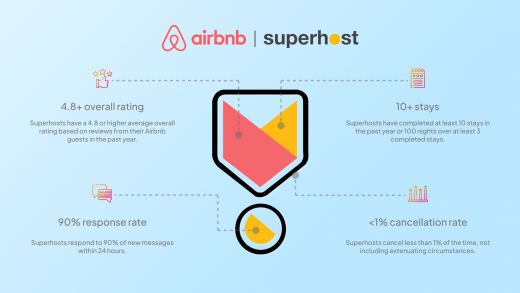Welcome to your guide on conquering the Airbnb Slow Season for your Vacation Rental Property. The Airbnb Slow Season refers to dips in demand, a time when bookings slow down. Knowing when these seasons occur lets hosts prepare proactively. In this guide, we’ll explore effective strategies for thriving in the face of challenges.
Imagine your Vacation Rental Property as a fortress, and the strategies we’ll discuss as guards securing its walls. From pricing tactics to embracing flexible booking options, these strategies act as your security guardians, fortifying your property against the challenges of the Airbnb Slow Season.
As we delve into each strategy, consider them as codes to unlock the potential of your property, much like smart locks. They provide a tight grip on your business’s security.
So, let’s embark on this journey together. Ready to unlock the strategies that secure your Vacation Rental Property’s success? Let’s navigate these seas with confidence.
Defining Airbnb Slow Season
Now, let’s delve into the intricacies of the Airbnb Slow Season and its impact on Vacation Rental Properties. Visualize this period as a dip in demand, a temporary phase where booking activities decelerate.
Shifting from active periods to the Slow Season resembles a change in the market’s rhythm. It’s not just a quiet phase; it’s a strategic pause, a time when hosts experience a decrease in guest bookings. Think of it as a seasonal pattern, influenced by factors like local events, holidays, or shifts in the weather.
As hosts, pinpointing the timing of this deceleration is crucial. The Airbnb Slow Season isn’t a fixed event on the calendar; it’s a fluctuating phase that hosts must navigate. It might align with off-peak travel times or events that draw attention elsewhere. Analyzing historical data provides hosts with a compass to identify when these slowdowns typically occur in their specific location.
Understanding the Airbnb Slow Season extends beyond recognizing a momentary dip. It’s about deciphering the patterns, anticipating the shifts, and implementing measures that transform challenges into opportunities.
Whether through seasonal promotions, optimized listings, or embracing flexible booking options, hosts can redefine the Slow Season, ensuring their Vacation Rental Property stands resilient and attractive to potential guests.
According to a study, apart from slow season, there are 2 more seasons in the vacation rental business. Check out this study here about seasons in Vacation Rental Business.
Analyzing Historical Data

Let’s delve into data analysis to unveil Airbnb Slow Season patterns. Examining historical data equips hosts with insights into specific slowdown timeframes, facilitating strategic adjustments.
To start, understanding varied Slow Season time frames across regions is crucial. Each locale has unique characteristics influencing traveler behavior and slowdown occurrence. This regional nuance emphasizes hosts’ need to tailor strategies based on specific geographic trends.
Shifting to a global perspective, the Southern Hemisphere faces its Airbnb Slow Season from June to August. Travelers seek warmer destinations during winter, causing a decline in bookings for vacation rentals in colder climates.
In the Northern Hemisphere, the Slow Season often aligns with colder winter months from December to February. Travelers opt for warmer escapes, impacting demand for vacation rental properties in colder regions.
Moving forward, hosts adapt strategies based on regional variations. Analyzing historical data isn’t just a reflection of past trends but a tool for anticipating future patterns. For example, hosts in ski resort areas might notice a Slow Season during summer due to a decline in winter sports enthusiasts.
Here’s a study done by AirDNA about the seasonality changes in the vacation rental business. Hosts can analyze these trends and plan their future strategies accordingly.
In summary, historical data analysis unveils diverse timelines of Airbnb Slow Seasons globally. This insight empowers hosts to fine-tune their approach, implementing region-specific strategies to navigate and thrive during these periods.
Strategies for Airbnb Slow Season

Now, let’s unlock a treasure trove of strategies to navigate the Airbnb Slow Season successfully. Just as smart locks secure properties, these tactics serve as guardians, ensuring hosts maintain control and prosper during slowdowns.
Smart Pricing Tactics
To commence, employing smart pricing tactics acts as a beacon during the Airbnb Slow Season. By leveraging data and market insights, hosts can dynamically adjust rates, enticing budget-conscious travelers and maximizing revenue potential.
Try Hostex’s Dynamic Pricing tool to price your vacation rental property strategically!
Competitive Nightly Rates
Transitioning smoothly, setting competitive nightly rates is paramount. This not only attracts price-sensitive guests but also positions the Vacation Rental Property favorably in search results, enhancing visibility during slower booking periods.
Extended Stay Discounts
Moving forward, enticing guests with extended stay discounts becomes a strategic play. This encourages longer bookings, providing a win-win situation for hosts and guests alike. The longer the stay, the more resilient the property during the Slow Season.
Pet and Family-Friendly

Shifting gears, catering to pet owners and families adds a distinct allure to the property. Embrace pet-friendly and family-friendly features, positioning the Vacation Rental Property as an inclusive haven, especially attractive during family-oriented travel seasons.
Referral Rewards Program
Taking a step further, implementing a referral rewards program engages satisfied guests. Encourage them to spread the word, offering discounts for friends and family referrals. Word-of-mouth becomes a powerful promotional force during the Slow Season.
Extra Person Charges Removal
Streamlining the booking process, consider removing extra person charges. This simplifies the guest experience and enhances the property’s appeal, especially for larger groups looking for budget-friendly accommodations during the Slow Season.
Guest Retention Strategies
Focusing on guest retention, reconnecting with previous guests fosters loyalty. This personalized approach encourages repeat bookings, transforming past guests into advocates who return even during the quieter periods.
Seamless Booking with Instant Book
Facilitating a seamless booking process, activating Airbnb Instant Book is a game-changer. This feature streamlines reservations, providing convenience to guests and increasing the property’s visibility, especially attractive during the Slow Season.
Minimum Stay Flexibility
Adjusting minimum stay requirements adds flexibility. During the Slow Season, relaxing these rules accommodates last-minute bookings, capturing the attention of spontaneous travelers seeking shorter stays.
SEO Optimization for Visibility

Shifting focus to online visibility, optimizing Airbnb SEO is paramount. Tailor your property’s listing content with relevant keywords and appealing descriptions, ensuring it stands out in search results during the quieter periods.
Flexible Cancellation Policies
Instilling confidence in potential guests, offering flexible cancellation policies is key. During uncertain times, guests are more likely to book when they know they can adjust plans without financial strain.
Social Media Promotion
Harnessing the power of social media, actively promoting the property enhances visibility. Engage with potential guests on various platforms, showcasing the unique features and offerings that make the Vacation Rental Property a standout choice during the Slow Season.
Community-Centric Marketing
Highlighting local communal activities in marketing efforts adds a personal touch. Showcase the vibrant community surrounding the property, attracting guests interested in immersive experiences even during slower booking periods.
Calendar Management
Keeping the calendar updated and available is fundamental. Adjust availability based on varying guest preferences, ensuring the property is accessible and accommodating during the fluctuating demand of the Slow Season.
Compelling Listing Titles
Crafting compelling listing titles is an art. Capture attention with titles that convey the unique offerings and charm of the Vacation Rental Property, increasing click-through rates during the Airbnb Slow Season.
Seasonal Visual Appeal
Updating property photos to reflect seasonal charm is a visual strategy. It adds an enticing touch, showcasing the property’s adaptability and attractiveness, especially during specific seasons that draw travelers.
Multi-Platform Exposure
Broadening exposure by listing on multiple platforms is strategic. Diversify your property’s reach, tapping into different audiences and increasing the chances of bookings during the Airbnb Slow Season.
Hosting Events Opportunities
Exploring opportunities to host events is a creative approach. Making the property available for events or special occasions can attract unique bookings and open up additional revenue streams during the Slow Season.
In essence, these strategies form a comprehensive toolkit for hosts, serving as security guardians during the Airbnb Slow Season. Like smart locks, hosts can adjust codes swiftly, maintaining a tight grip on the property’s success even during quieter periods.
Conclusion
In summary, mastering effective strategies for the Airbnb Slow Season can truly transform challenges into opportunities, allowing hosts to navigate downturns successfully. To safeguard and enhance your Vacation Rental Property’s overall success, consider implementing these dynamic and versatile approaches.
To wrap up, it’s essential to view the Airbnb Slow Season not as a setback but rather as a canvas for hosts to showcase their resilience and creativity. By proactively implementing tailored strategies, your property can not only weather the seasonal shifts but also thrive year-round, standing out in the competitive vacation rental landscape.
As the vacation rental industry evolves, leveraging technology becomes paramount. Hostex PMS offers a powerful solution, enabling hosts to automate key processes, streamline management tasks, and enhance overall efficiency. Navigate the Airbnb Slow Season with confidence, utilizing automation to optimize operations and secure a prosperous future for your Vacation Rental Properties.
In conclusion, embrace the dynamic nature of the hospitality market, stay proactive in your approach, and utilize technology to elevate your property’s performance. With the right strategies and tools, hosts can not only survive but thrive in the face of the Airbnb Slow Season, ensuring sustained success and growth in the competitive vacation rental landscape.



